Refereed Publications by Tyler Kinnear
Bloomsbury Handbook of Music and Art , 2023

Environment, Space, Place, 2023
The sounds of the college campus raise important questions of participation, identity, privilege,... more The sounds of the college campus raise important questions of participation, identity, privilege, disability, and marginalization. During the 2019–2020 academic year, three university instructors from distinct disciplines (music, history, and political science) and a student research assistant (history) used sound as a method for inquiring into contested and erased sites on the campus of Western Carolina University, a regional comprehensive university located in the southeastern United States. The project came to be called Sonic Histories. Paid student volunteers were led on a soundwalk and completed three online questionnaires that engaged questions of race and belonging on campus. This study presents findings on how students experience and interpret contested and erased sites through sounds heard and imagined. Sonic Histories explores two central questions. Historically, whose voices have been included and whose have been excluded on college campuses? How can sound promote awareness of racialized spaces and, in turn, achieve social engagement? The authors challenge the triumphant narrative of campus histories, which highlights racial reconciliation and progress while eliding the ways predominantly white campuses still exclude minorities. By re-centering minority voices in campus spaces, the authors explore the systemic exclusion of minorities that has occurred on college campuses across the country. At a time when places of higher education are refining and developing their commitment to diversity and inclusivity—while assessing their past in honest ways—the Sonic Histories project builds upon ongoing initiatives to position the college campus as a scholarly community that lives up to its democratic ideals of inclusion.

Music Research Annual, 2022
Ecomusicology engages scholars in interdisciplinary exchanges concerning music-and-environment. E... more Ecomusicology engages scholars in interdisciplinary exchanges concerning music-and-environment. Ecomusicological research is environmental, relational, holistic, systemic, explanatory, and crisis-oriented, bringing the field into conversation with several disciplines and sister fields. The authors of this article suggest the “watershed” as a metaphor for understanding ecomusicology as a transdisciplinary conversation, a stream of inquiry fed by multiple tributaries. These arterial influences feed back into a number of intellectual distributaries, making ecomusicology a transdisciplinary nexus, rather than an easily locatable and definable discipline. This article brings together key contributions to ecomusicology from musicology, ethnomusicology, popular music studies, and acoustic ecology, while acknowledging major influences from sound studies, zoömusicology, music education, music theory, anthropology, communication studies, bioacoustics, geography, political science, and sociology, among other disciplines. In turn, ecomusicology has contributed to environmental research in each of these disciplines as well as the broader study of sound-and-environment. This review is intended as an introduction to the field for those who are new to ecomusicology, while adding novel perspectives for scholars already engaged in ecological study, teaching, and music performance.

Chigiana: Journal of Musicological Studies, 2020
This article examines representations of physical movement in works by Canadian composer and acou... more This article examines representations of physical movement in works by Canadian composer and acoustic ecologist Hildegard Westerkamp (b. 1946). Particular attention is given to Westerkamp’s work with soundwalking, an exercise in which the main purpose is listening to a specific environment while moving through it. Scholars have discussed approaches to soundwalking, including Westerkamp’s engagement with the practice. However, there has been limited discussion of the influence of soundwalking on Westerkamp’s compositions. I posit that Westerkamp’s early soundwalks and radio series (Soundwalking, aired 1978-79) inform her later electroacoustic works in two ways: the sensation of self-movement through a physical space and isolated moments exploring the acoustic nuances of certain sound sources. To support this claim, this article juxtaposes Lighthouse Park Soundwalk (1977) with Talking Rain (1998). Both works re-create an excursion through a temperate rainforest in the Pacific Northwest of North America. But, where Lighthouse Park Soundwalk presents unprocessed excerpts from a recorded walk, Talking Rain features extended sections of processed environmental sounds, calling into question where a physical walk ends and an imagined one begins.
Intersections: Canadian Journal of Music , 2018
Canadian composer and acoustic ecologist R. Murray Schafer is known for his outdoor works. Other ... more Canadian composer and acoustic ecologist R. Murray Schafer is known for his outdoor works. Other scholars have considered the collaboration between musicians and the physical world in Schafer’s compositions and have linked performer-environment interaction with Canadian identity and environmentalism. Yet the role and meaning of outdoor acoustics in Schafer’s music remains understudied. This article investigates the aesthetics of echo in Schafer’s outdoor theatre work The Princess of the Stars (1981–4). Echo not only sends an original sound back from a surface but also offers insight into the role that musical sounds play in prescribing an interpretation of nature.
Ecomusicology Review, 2014
This three-part series considers how three artists comment on place in their field recordings. Th... more This three-part series considers how three artists comment on place in their field recordings. The works considered are Kiyoshi Mizutani's "Scenery of the Border: Environment and Folklore of the Tanzawa Mountains", Peter Cusack's "Sounds from Dangerous Places," and Steve Peters's "The Very Rich Hours."

Organised Sound, 2012
John Luther Adams's The Place Where You Go to Listen (2006), a permanent sound-and-light installa... more John Luther Adams's The Place Where You Go to Listen (2006), a permanent sound-and-light installation at the Museum of the North in Fairbanks, Alaska, resonates strongly with the geography and ecology of the composer's place of residence. The audiovisual experience is generated through a computer programme that translates real-time data streams from geophysical events into sound and colour signals. The Place functions as an artistic mirror, absorbing data from natural phenomena and reflecting it back to the listener in a deliberately allusive way. As a result, those present are invited to raise their awareness to the ‘unheard vibrations’ of the natural world.Upon entering the installation, the listener perceives an ongoing, harmonically dense hum. Through immersion, he or she notices change in both the location from which sounds project and the properties of audio and visual signals. Drawing on information theory, this article investigates the process whereby Adams renders scientific data into an audiovisual presentation as well as the role the composer and audience play in attributing meaning to this environmentally driven work. By examining the communicative layers of the installation and exploring the perceptual tendencies of the listener, we can better understand how The Place raises environmental awareness.
Dissertation by Tyler Kinnear
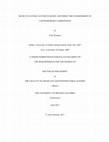
This thesis examines nature as both a concept and source material in contemporary music. Composer... more This thesis examines nature as both a concept and source material in contemporary music. Composers reinforce, revise, and challenge existing conceptualizations of nature through their engagement with natural settings, live or recorded environmental sounds, and/or non-sounding environmental information. How composers understand nature informs the ways in which they employ aspects of the physical world in their music. This study explores the interplay between nature-as-concept and nature-as-source-material in art-based walks, outdoor music, electroacoustic composition, and concert-hall pieces. Through analysis of works representative of these wide-ranging genres, this thesis offers a critical assessment of how nature is imagined in a contemporary musical context.
The concept of a continuum is used as both a structural and theoretical tool in this study. A gradual transition from real-world encounters with nature to an abstracted experience of it is made over the course of the thesis. The works discussed in Chapter Two exist as lightly edited recordings made by artists during an outdoor walk/improvisation. The outdoor theatre piece considered in Chapter Three takes place at a lake and draws on that environment in several ways during a performance. The two electroacoustic compositions investigated in Chapter Four combine unmodified and modified nature sounds. The natural world is still present in the concert-hall works discussed in Chapter Five, but recorded nature sounds are combined with live instrumental music based on environmental properties and processes. In addition, this thesis traces four themes across works. These are technology, human presence, myth, and the transformation of the environment.
The works under consideration demonstrate a range of approaches to composing with and conceptualizing nature. Some of the works comment on environmental issues, such as noise pollution and climate change. Others aim to drive understanding beyond the limits of human perception; that is, to open up new psychological spaces. In different ways, the works under focus illuminate the relationship between humans and the natural world. By stimulating discourse around how we think about nature, these pieces encourage critical thought regarding our place as humans in the physical environment.
Editorship by Tyler Kinnear
Ecomusicology Review, 2016
Music and Politics , 2014
Reviews by Tyler Kinnear
Journal of the Society for American Music, 2018
Soundscape: The Journal of Acoustic Ecology, 2015
Public Musicology by Tyler Kinnear

"Featuring sound-based artwork that encourages visitors to listen more closely to the natural wor... more "Featuring sound-based artwork that encourages visitors to listen more closely to the natural world and to think about how sound is being used in a time of environmental crisis.
What can sound tell us about the current conditions that shape our planet? And what aspects of environmental change can we better understand through sound? Through these and other themes, the works in the exhibition consider our connection with the natural world and humanity's place in Earth’s intricate ecological web.
Artists featured in the exhibition: Matthew Burtner, Raven Chacon, Timothy M. Collins & Reiko Goto Collins, Gordon Hempton, Cheryl Leonard, Katie Paterson, Andrea Polli, and Lee Weisert. Collaborators for the 3-channel video installation Gauge: Alexa Hatanaka, Patrick Thompson, Raven Chacon, Danny Osbourne, Sarah McNair-Landry, Eric McNair-Landry, and Erik Boomer.
This exhibition is supported in part by the WCU Campus Theme Committee, the WCU School of Art & Design, Guitar Center, and Winding Stair Nursery in Franklin, NC."
"Moderator Carmen Braden sat down with each Audio Postcards Canada adjudicator to discuss their p... more "Moderator Carmen Braden sat down with each Audio Postcards Canada adjudicator to discuss their process in choosing the final 16 compositions out of 87 submissions. The conversations are insights into how different acoustic ecologists, sound artists, and electroacoustic composers think about sound and how they engaged with the audio compositions."

With the financial support of the Rio Tinto Alcan Performing Arts Award, Music 2014, the Western ... more With the financial support of the Rio Tinto Alcan Performing Arts Award, Music 2014, the Western Front produced Music from the New Wilderness, a production consisting of new compositions that integrate pre-recorded material, including an archival wax cylinder recording and recent field recordings. Music scholar Ellen Waterman and doctoral student Tyler Kinnear attended the production several times. At the invitation of DB Boyko (who played a major role as director/curator of Music from the New Wilderness), Ellen and Tyler scheduled time to formally discuss their experiences. Prior to conversation, they exchanged a series of questions to guide their discussion (see “Questions”). Topics addressed during the dialogue included stylistic features of works on the program and larger concepts, such as wilderness, technology, and genre. Tyler created the following audio work using excerpts from the meeting and field recordings he made in Vancouver and on Vancouver Island.
Papers by Tyler Kinnear
Dance. This thesis has been approved and accepted by:

Our interdisciplinary team, the Transforming Pain Research Group, focuses on inventing and reconf... more Our interdisciplinary team, the Transforming Pain Research Group, focuses on inventing and reconfiguring multimedia technologies for the estimated 1 in 5 people in North America who experience chronic pain. In this paper, we introduce a new approach to managing anxiety and chronic pain in a clinical setting using soundscape compositions based on soundwalks. Although this research is in its nascent stage, the use of media, including music and sounds, pervade several well-known approaches to pain management and anxiety. The general purpose of the proposed experiment is to investigate the potential stressreducing effects of patients listening to soundwalks using headphones in the waiting room of clinics. Since some patients might experience anxiety and stress while waiting, can a change in environment help minimize the level of discomfort? And furthermore, can such a stress-reduction system assist patients in communicating their symptoms more clearly to doctors?
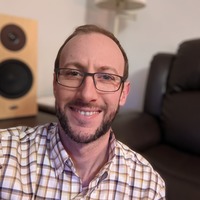

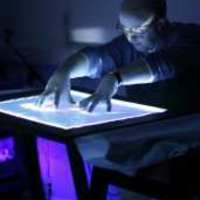

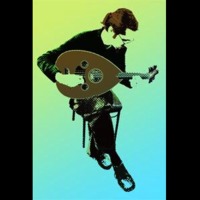

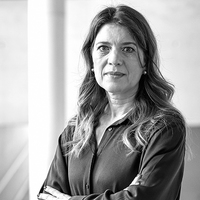
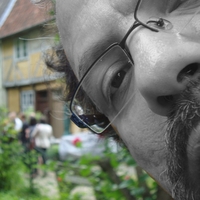

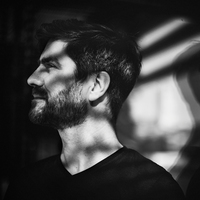
Uploads
Refereed Publications by Tyler Kinnear
Dissertation by Tyler Kinnear
The concept of a continuum is used as both a structural and theoretical tool in this study. A gradual transition from real-world encounters with nature to an abstracted experience of it is made over the course of the thesis. The works discussed in Chapter Two exist as lightly edited recordings made by artists during an outdoor walk/improvisation. The outdoor theatre piece considered in Chapter Three takes place at a lake and draws on that environment in several ways during a performance. The two electroacoustic compositions investigated in Chapter Four combine unmodified and modified nature sounds. The natural world is still present in the concert-hall works discussed in Chapter Five, but recorded nature sounds are combined with live instrumental music based on environmental properties and processes. In addition, this thesis traces four themes across works. These are technology, human presence, myth, and the transformation of the environment.
The works under consideration demonstrate a range of approaches to composing with and conceptualizing nature. Some of the works comment on environmental issues, such as noise pollution and climate change. Others aim to drive understanding beyond the limits of human perception; that is, to open up new psychological spaces. In different ways, the works under focus illuminate the relationship between humans and the natural world. By stimulating discourse around how we think about nature, these pieces encourage critical thought regarding our place as humans in the physical environment.
Editorship by Tyler Kinnear
Reviews by Tyler Kinnear
Public Musicology by Tyler Kinnear
What can sound tell us about the current conditions that shape our planet? And what aspects of environmental change can we better understand through sound? Through these and other themes, the works in the exhibition consider our connection with the natural world and humanity's place in Earth’s intricate ecological web.
Artists featured in the exhibition: Matthew Burtner, Raven Chacon, Timothy M. Collins & Reiko Goto Collins, Gordon Hempton, Cheryl Leonard, Katie Paterson, Andrea Polli, and Lee Weisert. Collaborators for the 3-channel video installation Gauge: Alexa Hatanaka, Patrick Thompson, Raven Chacon, Danny Osbourne, Sarah McNair-Landry, Eric McNair-Landry, and Erik Boomer.
This exhibition is supported in part by the WCU Campus Theme Committee, the WCU School of Art & Design, Guitar Center, and Winding Stair Nursery in Franklin, NC."
Papers by Tyler Kinnear
The concept of a continuum is used as both a structural and theoretical tool in this study. A gradual transition from real-world encounters with nature to an abstracted experience of it is made over the course of the thesis. The works discussed in Chapter Two exist as lightly edited recordings made by artists during an outdoor walk/improvisation. The outdoor theatre piece considered in Chapter Three takes place at a lake and draws on that environment in several ways during a performance. The two electroacoustic compositions investigated in Chapter Four combine unmodified and modified nature sounds. The natural world is still present in the concert-hall works discussed in Chapter Five, but recorded nature sounds are combined with live instrumental music based on environmental properties and processes. In addition, this thesis traces four themes across works. These are technology, human presence, myth, and the transformation of the environment.
The works under consideration demonstrate a range of approaches to composing with and conceptualizing nature. Some of the works comment on environmental issues, such as noise pollution and climate change. Others aim to drive understanding beyond the limits of human perception; that is, to open up new psychological spaces. In different ways, the works under focus illuminate the relationship between humans and the natural world. By stimulating discourse around how we think about nature, these pieces encourage critical thought regarding our place as humans in the physical environment.
What can sound tell us about the current conditions that shape our planet? And what aspects of environmental change can we better understand through sound? Through these and other themes, the works in the exhibition consider our connection with the natural world and humanity's place in Earth’s intricate ecological web.
Artists featured in the exhibition: Matthew Burtner, Raven Chacon, Timothy M. Collins & Reiko Goto Collins, Gordon Hempton, Cheryl Leonard, Katie Paterson, Andrea Polli, and Lee Weisert. Collaborators for the 3-channel video installation Gauge: Alexa Hatanaka, Patrick Thompson, Raven Chacon, Danny Osbourne, Sarah McNair-Landry, Eric McNair-Landry, and Erik Boomer.
This exhibition is supported in part by the WCU Campus Theme Committee, the WCU School of Art & Design, Guitar Center, and Winding Stair Nursery in Franklin, NC."